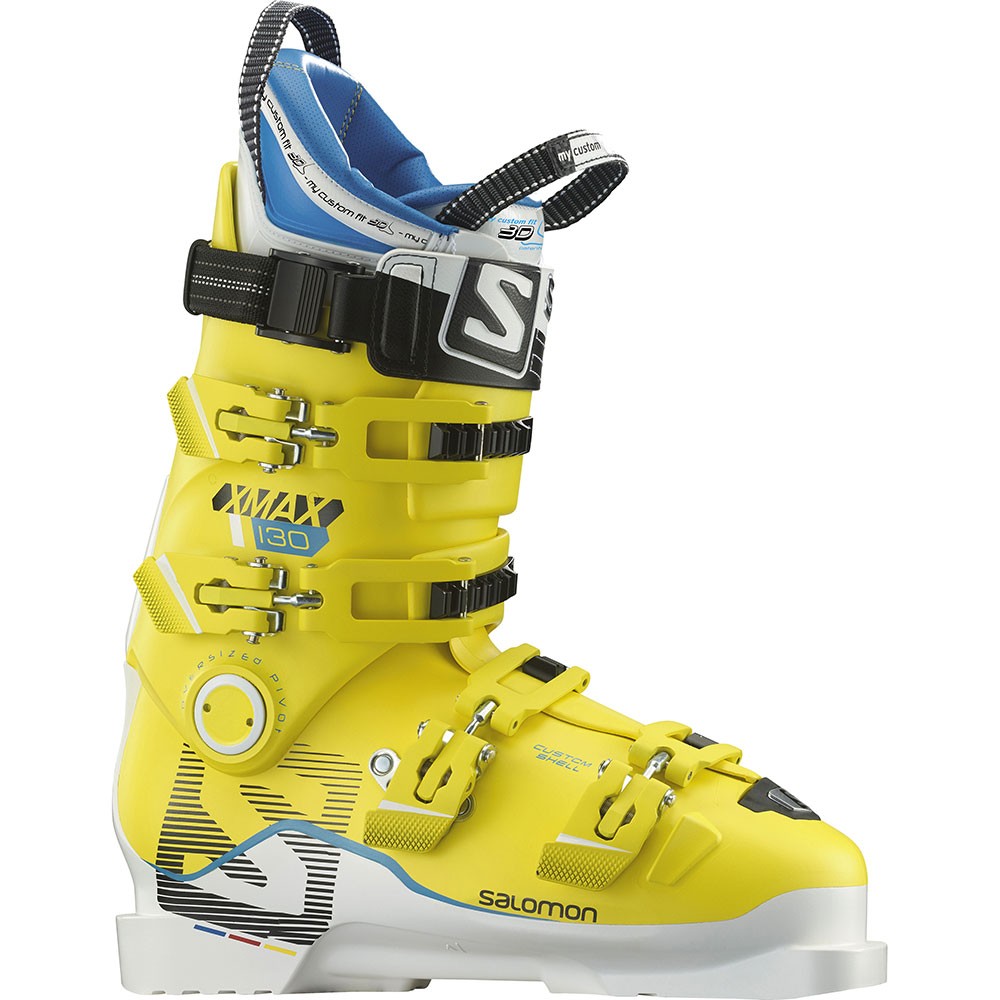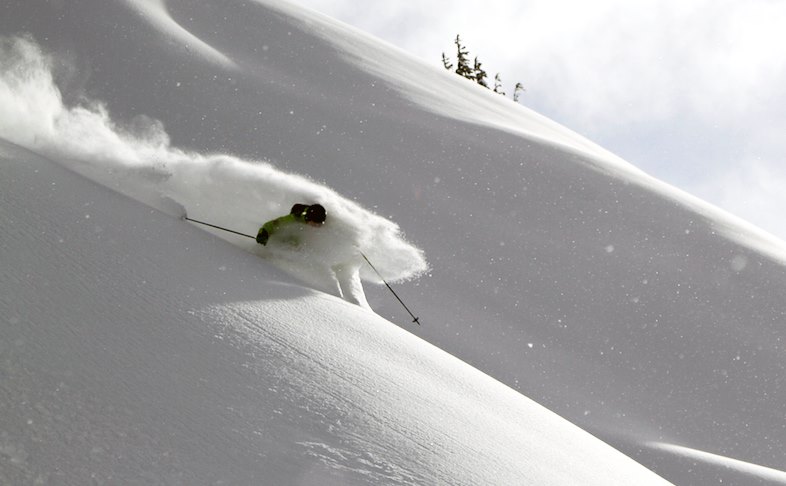
2015-2016 Salomon X Max 130
Size Tested: 27.5
MSRP: $699
Test Locations: Chugach Powder Guides, Alyeska Resort, Jackson Hole Mountain Resort
Skis Used: Salomon Rocker 2 122 192cm, Salomon Quest 115 188cm, Salomon Enduro XT 850 184cm, DPS Wailer 105 T2 185cm, 4Frnt Devastator 194cm, Blizzard Bodacious 186cm, Blizzard Cochise 193cm, DPS Lotus 138 (Spoon and non-Spoon versions) 192cm, Volkl Two 196cm, Volkl Shiro 193cm
Days Tested: 70+
Reviewer’s Feet: Reviewer’s Feet: medium volume with high instep
[Our review was conducted in the 14/15 X-Max 130. The shell is unchanged for the 15/16 season except for the colorway, and there is an updated liner.]
Intro
Salomon describes the X-Max 130 as a “top level race boot incorporating Twinframe technology to combine superior transmission and power with unmatched foot wrapping for maximum on-piste performance”.
While designed as an on-piste race-style boot, I’ve used the X Max 130 primarily for heli-ski guiding and in-bounds skiing for parts of the 13/14 and 14/15 ski season.
After having skied several hybrid AT / Alpine boots like the 12/13 Cochise Pro 130 and the Salomon Quest Max, I was hoping to gain a little more precision and power by switching to the X-Max 130. Since skiing the X Max 130, I have also used several other alpine and AT boots that I’ll reference below.
My Setup
Shortly after getting my pair, I swapped out the stock liner for a pair of Intuition Powerwraps fitted with a set of Superfeet Korks, fitted and shaped by Powder Hound ski shop in Girdwood, Alaska.
While I have minimal time in the stock liners, all of the other boots I’ve reviewed so far have also been skied primarily with the Powerwraps, which allows for a fair comparison of the shells’ performance.
I also eventually swapped out the stock “world cup claw strap” for a World Cup Booster strap.
Fit
Overall, the ankle volume of the X Max 130 is relatively high for a 98mm-lasted race boot. Marshall Olson touched on this in his detailed discussion of boot volume distribution during his review of the Tecnica R9.8.
I certainly agree with his assessment, and rely on the Intuition liner to help keep my ankle relatively planted. The heel pocket of the X Max 130 is well formed, though it does allow my relatively narrow heels to move a tiny amount. (This is probably also partly due to the large ankle volume.)
For my feet, the Dynafit Vulcan in a size 27.5 still has the best heel pocket I’ve found, better than the X Max 130 (27.5) and the Cochise Pro 130 (27.5).
For all day comfort, I did benefit from a series of 6th toe and fifth metacarpal head punches, which is something that I end up doing in almost any alpine boot. I never got the forefoot quite as comfortable as the Cochise Pro 130, even after the guys at Powder Hound did the Salomon Custom fit process to try to expand the toe a little bit.

The boot fitters at Powder Hound did a terrific job dialing the fit of the liners and creating some very nice custom Superfeet Korks insoles that have now seen well over a 100 days of use in several different pairs of boots.
In my review of the Cochise Pro 130, I compared it to the other two boots that I had skied most in the past season: the X-Max 130 and the Dynafit Vulcan. After quite a few more days in all three boots I still hold the same opinion:
“At home, with one foot in the Cochise Pro 130 I swapped between two other boots on the other foot: a Dynafit Vulcan in a size 27.5 with an Intuition Powerwrap liner and a 2014-2015 Salomon X Max 130, also in a size 27.5.
My heel doesn’t feel as locked in in the Cochise 130 Pro as it does in the Vulcan, so the Cochise feels closer to the Salomon X Max 130 in that respect.
The instep and overall volume of the Cochise is similar to the X Max 130, although the Cochise is a bit more comfortable and natural feeling overall, despite the fact that I’ve done very similar punches to the Salomon.
All three boots seem to have a little more volume than I need in the ankle, but the Intuition liners mitigate this well in each case.”
Canting (or lack thereof)
In my review of the Cochise Pro 130, I discussed the limited range of canting provided by the boot, and my attempts to make up for this with some liner modifications. I struggled with this significantly more with X Max 130, which has fixed rivets at the ankles that do not allow any canting adjustment at all.
The solution might be to have the soles ground to have more canting, or to install Cantology plates, but neither of these are available in Alaska as far as I know. Your experience may vary, but more so than with the Cochise, I feel like I have to A-frame my knees to match edge angles on hard snow in these boots.
Liner
As I mentioned above, I don’t have a lot to say about the liner of the X Max 130, since I only used the stock liner a few times. It was not quite as warm as my Intuition liners, and created some very uncomfortable pressure over my insteps which is an issue I have had with almost every stock Alpine and AT boot liner I’ve used.
But based on my short time using them, I would say that the stock tongue is well supported and creates a little extra cushion in hard, bumpy conditions compared to the Powerwrap.
NEXT: Soles, Warmth, Etc.

Paul, how did you mount the Booster strap? It seems to me that if replaced the power strap and used the existing holes, that the booster would get between the liner and the shell, since the shell comes up quite high.